10 Traditional Dishes from Around the Globe That Use Berries
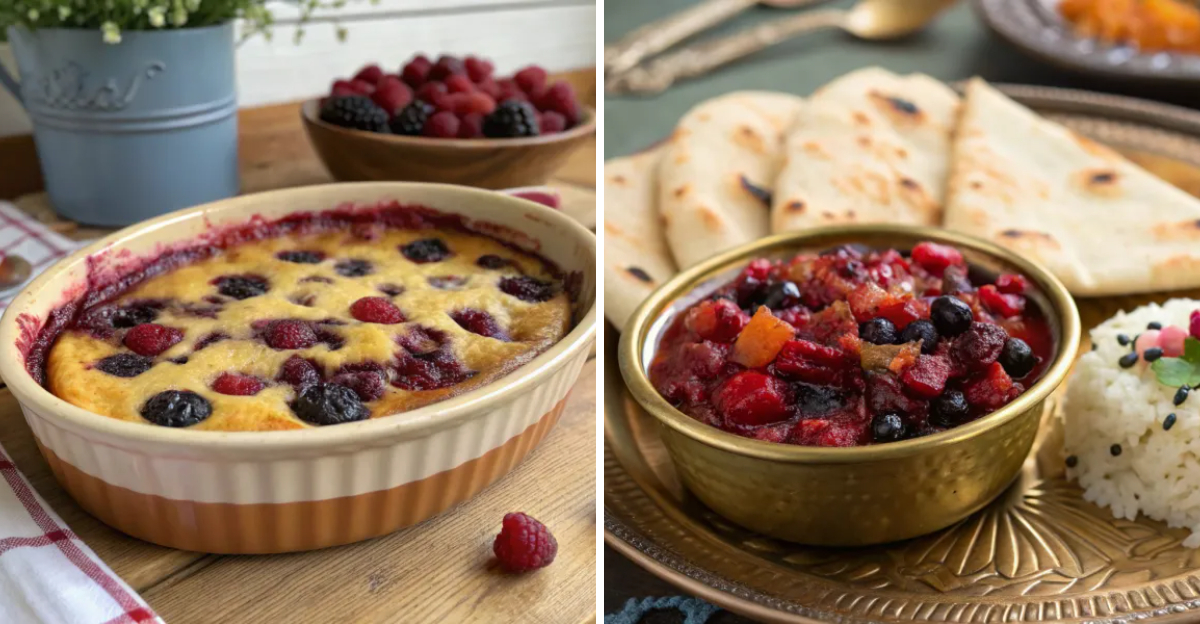
Berries have been bringing natural sweetness and color to traditional recipes across different cultures for centuries. From Scandinavian puddings to Persian rice dishes, these tiny fruits add both flavor and nutrition to meals around the world. Many of these berry dishes tell stories of local harvests, family traditions, and seasonal cooking practices. Here are ten traditional dishes that showcase how different cultures have used berries in their kitchens.
1. Rødgrød from Denmark
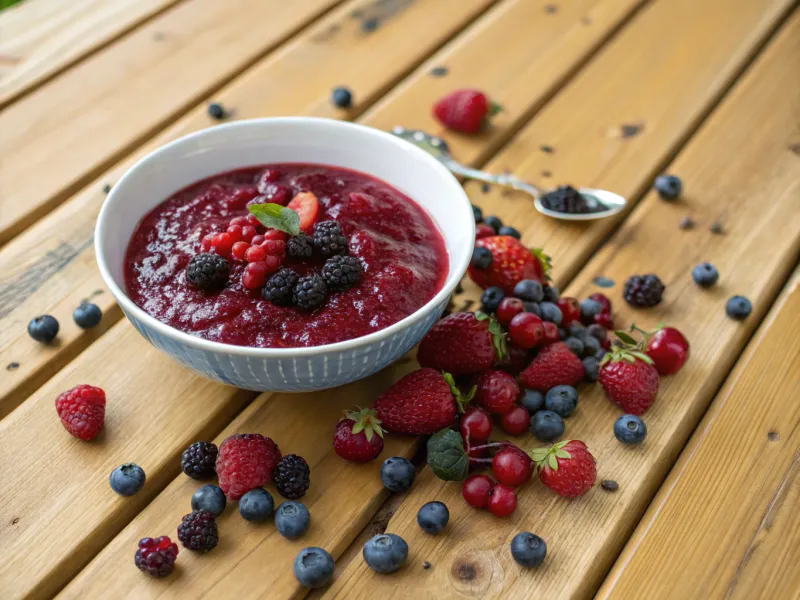
Danish families have been making this thick berry pudding for generations using whatever red berries they could find in summer. Strawberries, raspberries, blackcurrants, and cherries get cooked down with sugar and cornstarch until they form a smooth, jam-like consistency. The dish can be served warm during cold months or chilled as a refreshing summer treat. Most Danish households serve it with fresh milk or cream poured over the top. Children often learn to pronounce this tongue-twisting name as their first cooking lesson, making it both a language challenge and culinary tradition rolled into one memorable experience.
2. Mustikkapöperö from Finland
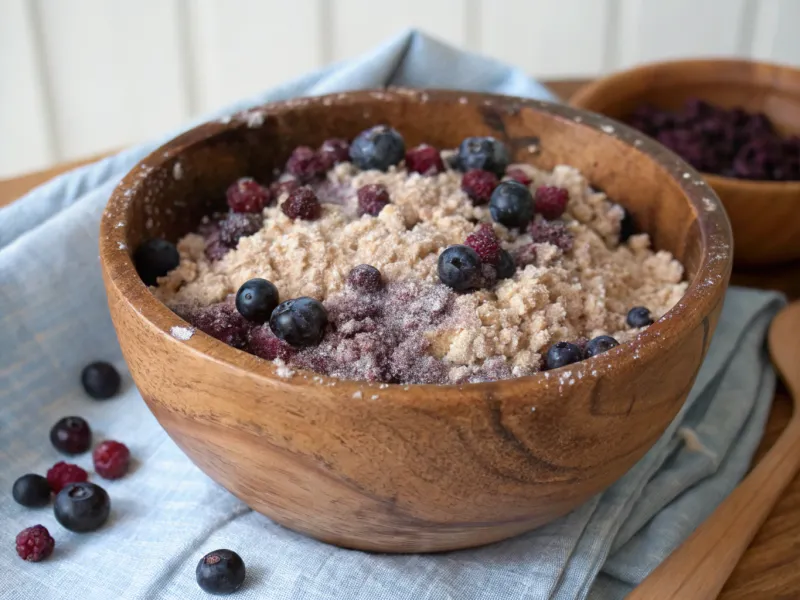
Finnish forests provide abundant wild blueberries that locals mix with talkkuna, a flour mixture made from roasted grains. This simple combination creates a rustic dish that tastes like the Finnish wilderness. Families often prepare this during blueberry picking season, crushing fresh berries by hand and stirring them into the flour mixture. The result has a grainy texture that contrasts beautifully with the juicy berries. Many Finns add a splash of cold milk or buttermilk to make it creamier, though purists prefer eating it dry with just a sprinkle of sugar on top for more sweetness.
3. Saskatoon Berry Pie from Canada

Prairie provinces in Canada treasure the Saskatoon berry, a purple fruit that grows wild across the region. Indigenous communities have harvested these berries for thousands of years, and settlers learned to bake them into flaky-crusted pies. The berries have a nutty, almond-like flavor that becomes sweeter when baked. Canadian bakers typically add just sugar and a touch of lemon juice to let the natural berry taste shine through the pastry. Saskatchewan residents consider this pie their unofficial provincial dessert, often serving it at community gatherings and summer fairs throughout the berry picking season.
4. French Clafoutis with Berries

Originally from the Limousin region of France, clafoutis traditionally uses black cherries baked in a custard-like batter. Modern French cooks have adapted the recipe to include various berries, adding colorful variations of this rustic dessert. The batter resembles pancake mix but bakes into something between a cake and a custard. Berries sink partially into the batter while baking, creating pockets of fruit throughout each slice. French families often serve this warm from the oven, dusted with powdered sugar. The dessert tastes best when the berries are at peak ripeness and the batter has a slightly wobbly center.
5. Scandinavian Vispipuuro

This whipped porridge turns ordinary wheat semolina into something that looks like pink mousse when mixed with lingonberries. Scandinavian children often get excited watching the mixture change color and texture during the whipping process. The dish requires patience, as cooks must whip the semolina and berry mixture for several minutes until it becomes light and airy. Lingonberries provide tartness that balances the mild grain flavor. Nordic families traditionally serve this as both a dessert and a light meal, especially during winter months when fresh berries are scarce but preserved lingonberries remain available in pantries across Finland, Norway, and Sweden.
6. Eastern European Kissel
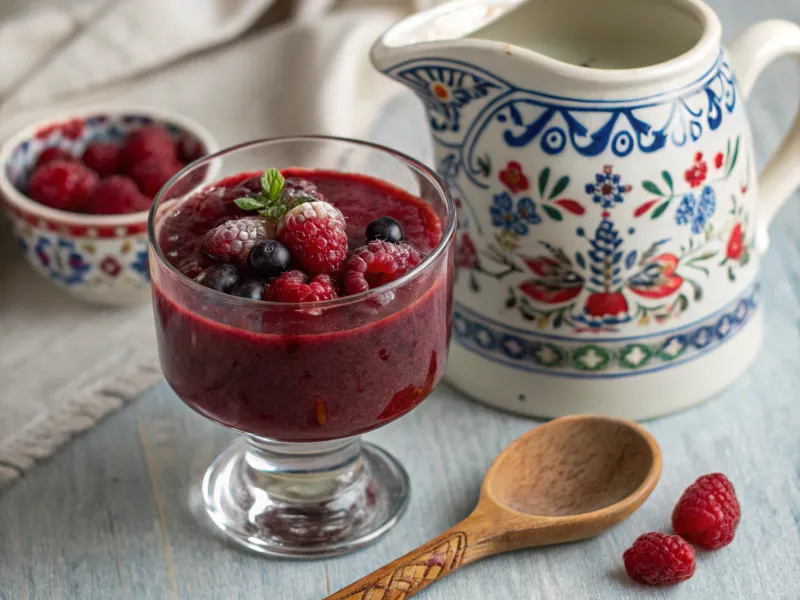
Kissel bridges the gap between drink and dessert, with a consistency thick enough to coat a spoon but thin enough to sip. Cooks across Eastern Europe make this by thickening berry juice with potato starch or cornstarch. Different countries prefer different berries: Russians often use cranberries, while Poles favor strawberries or raspberries. The thickness can be adjusted by adding more or less starch to achieve the desired consistency. Many families serve kissel as a comforting drink for sick children or as a light dessert after heavy meals. The smooth texture and concentrated berry flavor make it popular across versatil age groups in the region.
7. Native American Blueberry Grunt

Native American tribes in northeastern regions developed this dish by stewing wild blueberries with natural sweeteners and topping them with simple dumplings made from corn meal and water. The name comes from the grunting sound the berries make while bubbling under the dumplings during cooking. The dumplings steam rather than bake, creating a soft, bread-like topping over the fruit. Tribal communities often prepared this during blueberry season as a way to use large quantities of fresh berries. The dish provided both fruit and grain in one pot, making it a complete and filling meal for families.
8. Indian Berry Chutney
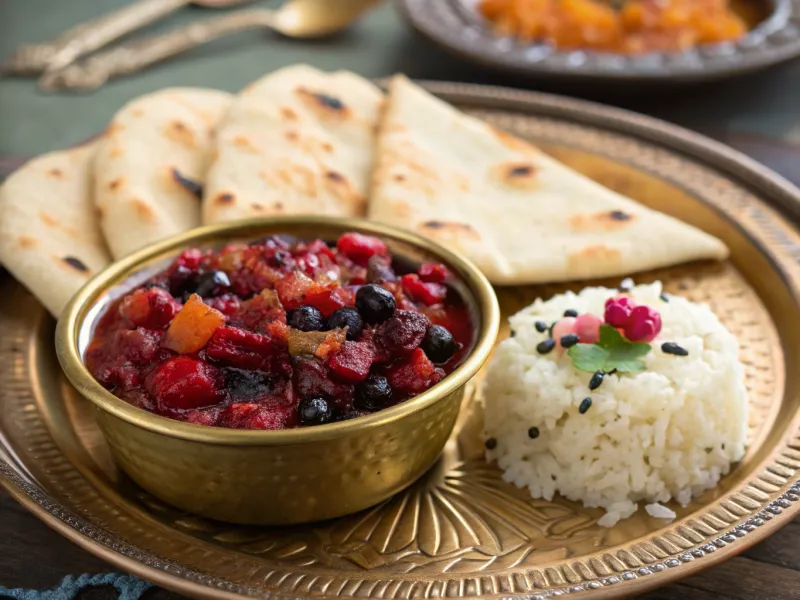
Indian cooks have started incorporating strawberries and blueberries into traditional chutney recipes, mixing them with cumin, coriander, ginger, and green chilies. This combination adds a sweet and spicy condiment that pairs well with flatbreads and rice dishes. The berries provide natural sweetness that balances the heat from chilies and the earthiness from roasted spices. Some regions add mint leaves or cilantro for more freshness. This modern twist on traditional chutneys has become popular at Indian restaurants and home kitchens, offering a fruity alternative to the usual tomato or tamarind-based condiments that typically accompany Indian meals.
9. Persian Tahchin with Barberries
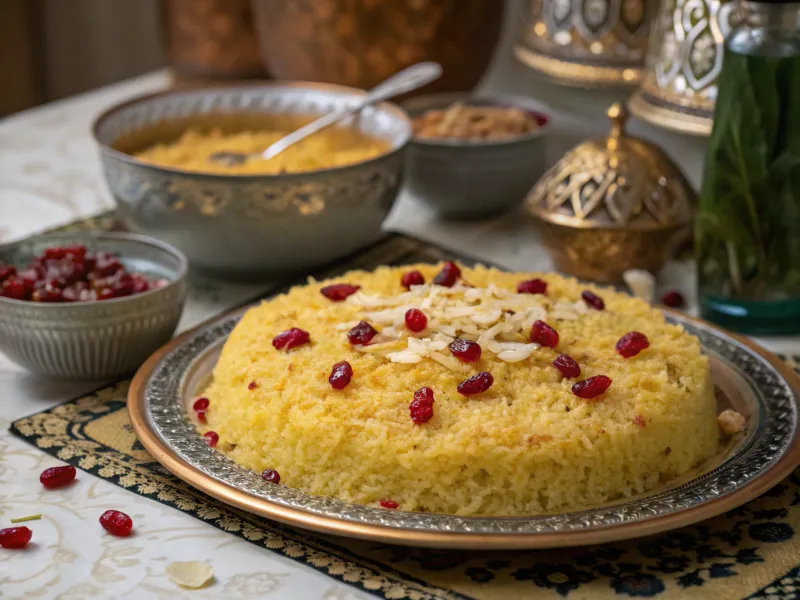
Iranian cooks layer saffron-scented rice with chicken and tart barberries called zereshk to create this golden, cake-like dish. The barberries add bright red color and sharp flavor that cuts through the rich, creamy rice mixture. The dish gets baked in a pot until the bottom forms a crispy crust called tahdig, which Iranians consider the most prized part. Barberries are soaked briefly to remove excess tartness before being mixed into the rice. Persian families often serve tahchin at gatherings and diverse occasions, inverting the pot onto a platter to show off the golden crust decorated with jewel-like red berries scattered throughout the rice layers.
10. Combined Blueberry Tikka Masala
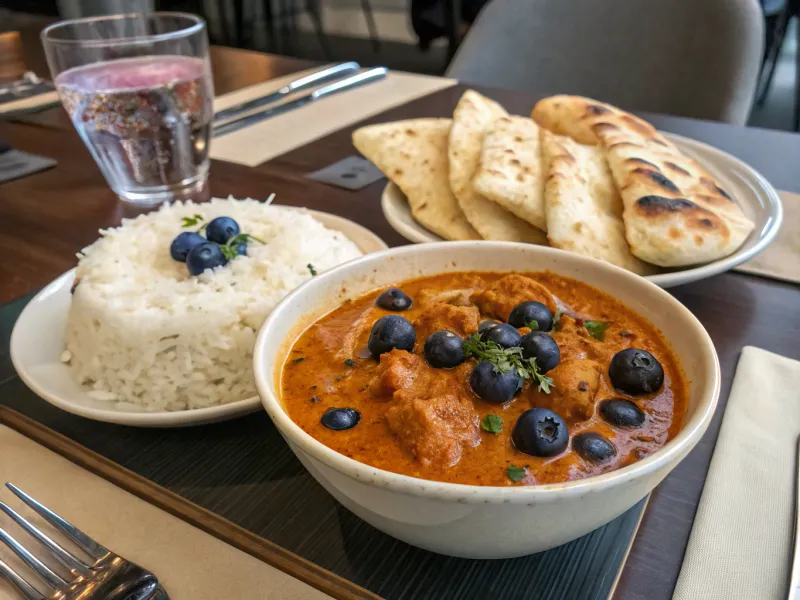
Modern chefs have started adding fresh blueberries to traditional tikka masala sauce, adding an combination that has gained popularity in contemporary Indian restaurants. The berries add natural sweetness and a pop of color to the creamy tomato base. Blueberries break down slightly during cooking, releasing their juices into the coconut milk and curry powder mixture. This creates purple streaks throughout the orange sauce while maintaining the familiar tikka masala flavor profile. Food enthusiasts report that the berries complement the warming spices without overwhelming them, though this fusion approach remains controversial among traditional Indian cooking purists who prefer classic preparations.
